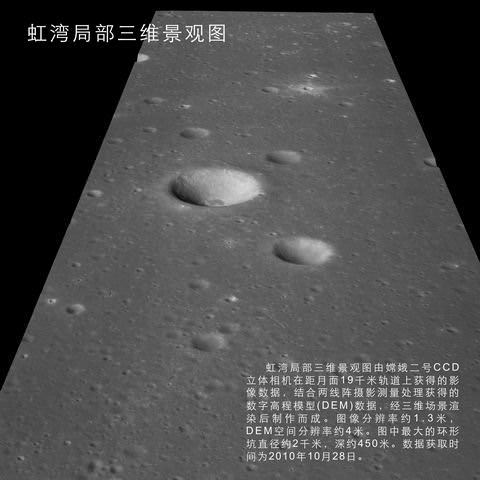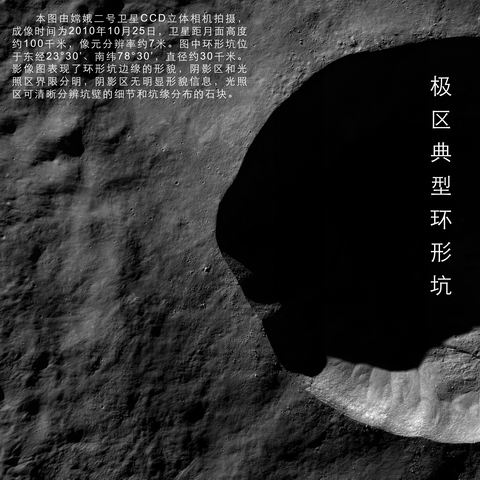[/caption]
China’s space agency released the first images taken by the newest lunar orbiter, Chang’E 2. “The relaying back of the pictures shows that the Chang’e-2 mission is a success,” said Zhang Jiahao, director of the lunar exploration center of the China National Space Administration.
During its expected 6-month mission the orbiter will come within 15km above the surface, with the main mission of looking for potential landing for Chang’E-3, China’s next lunar mission that will send a rover to the Moon’s surface, scheduled for 2013. While all the other images are of Sinus Iridum (Bay of Rainbows), a rough translation of the writing on this top image has something to do with “antarctic,” so its possible this could be a crater near one of the lunar poles.

The data for this 3D image was taken by a the spacecraft’s stereo camera from 18.7 km on Oct. 28, four days after launch. The image has a resolution of 1.3 meters per pixel, more than ten times the resolution of pictures from Chang’E 2’s predecessor, Chang’E 1.
For comparison, NASA’s Lunar Reconnaissance Orbiter has a resolution of about 1 meter.
Sinus Iridum is considered to be one of the candidates for the 2013 lander.
Chang’E 2 will also test “soft landing” technology for the lander, which might mean that either the spacecraft is carrying an impactor or that the spacecraft itself will be crashed into the lunar surface like Chang’E 1.


Sources: NASA Lunar Science Institute, China National Space Administration
